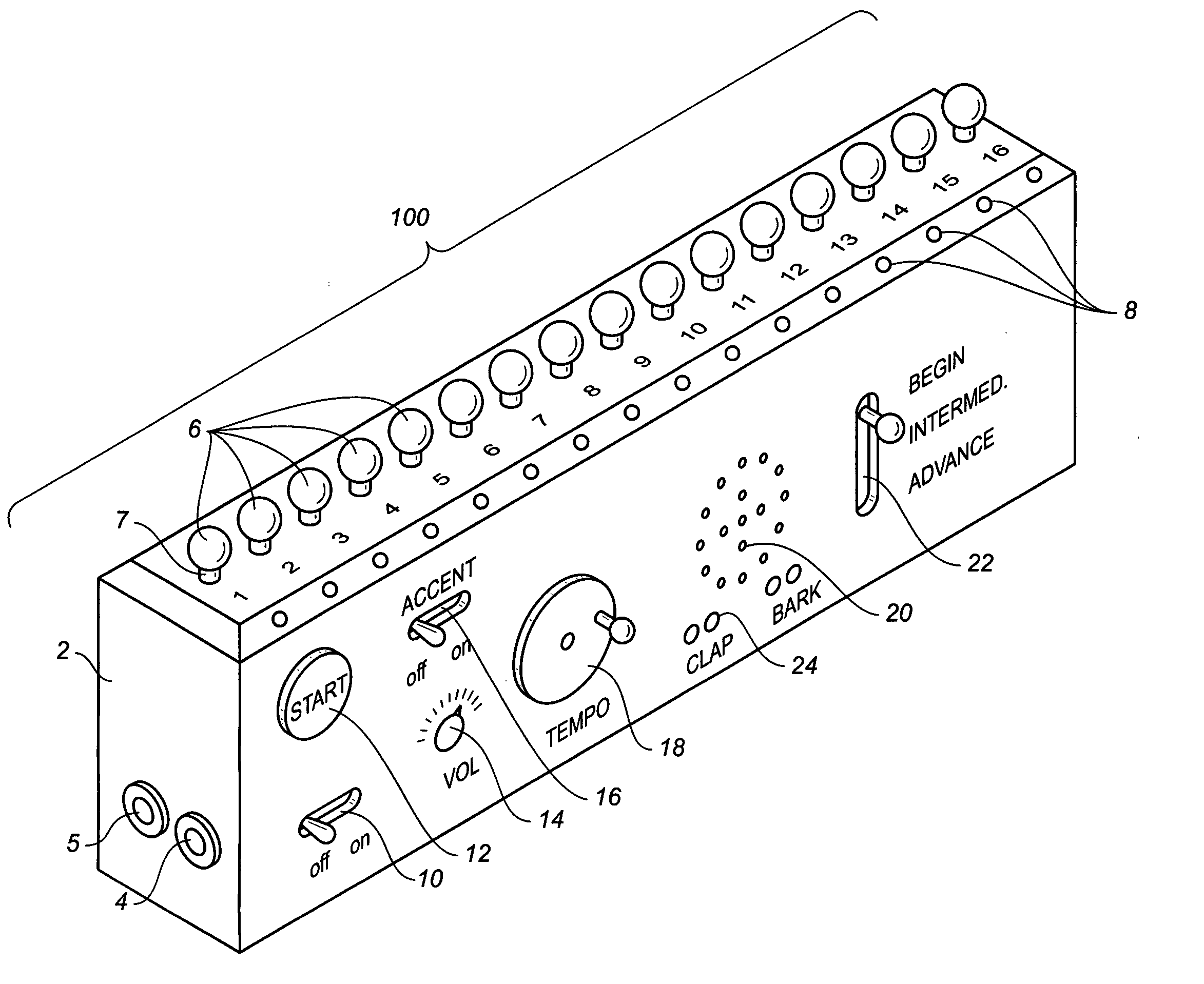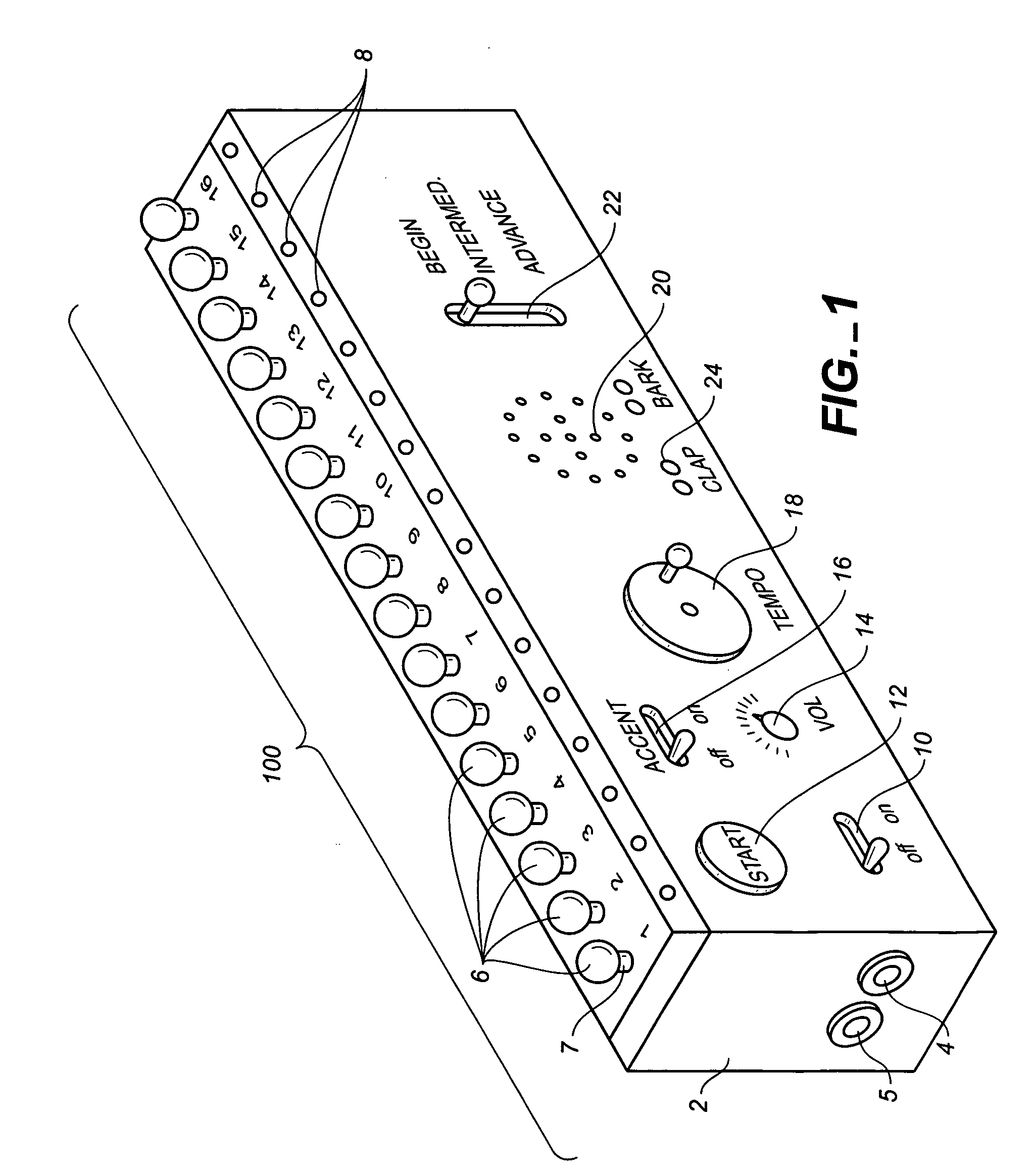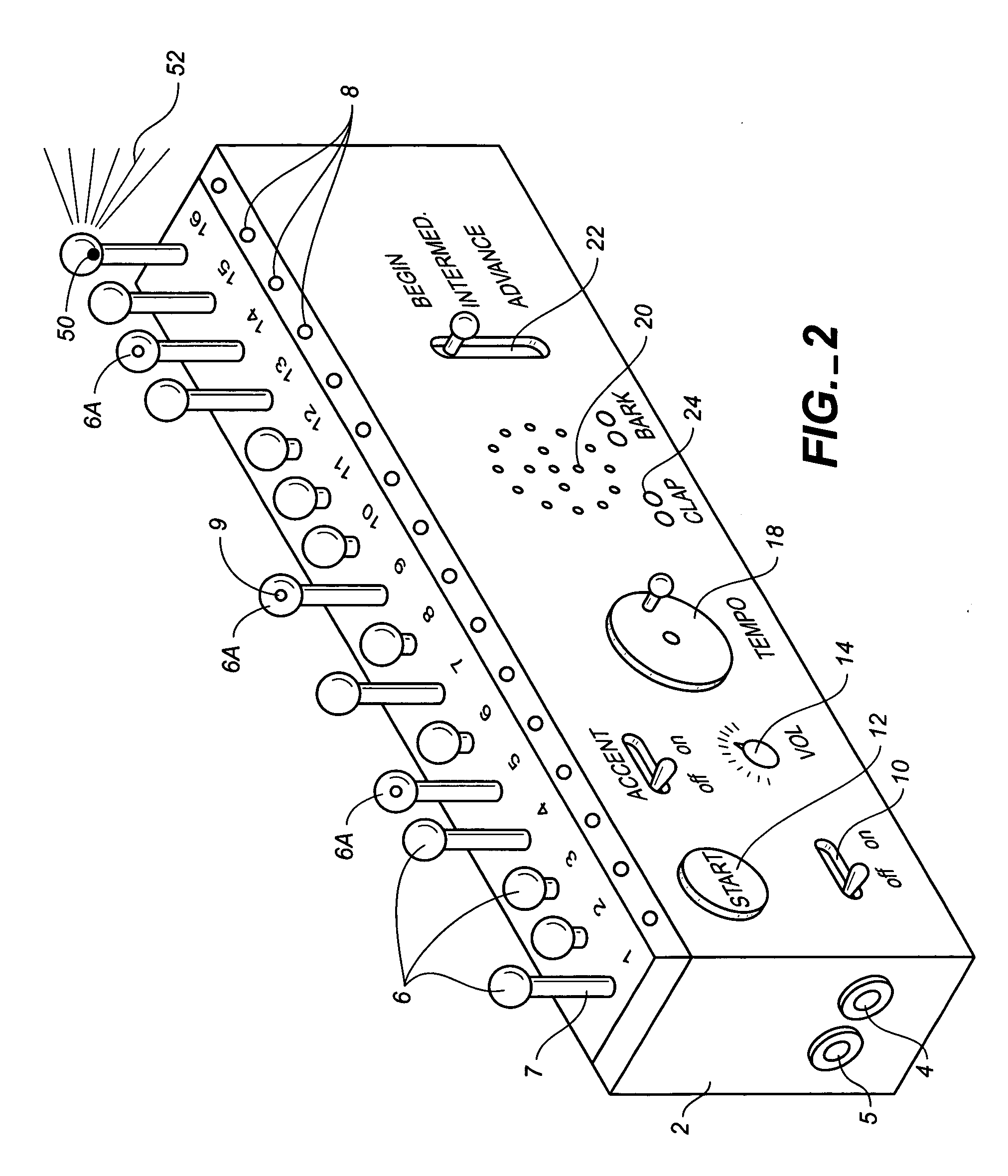Method and apparatus for teaching rhythm
a teaching method and rhythm technology, applied in the field of teaching and training tools, can solve the problems of not understanding the foundation, failing to learn the basics of rhythm, and difficulty in teaching rhythm, and achieve the effect of longer rhythmical phrases
- Summary
- Abstract
- Description
- Claims
- Application Information
AI Technical Summary
Benefits of technology
Problems solved by technology
Method used
Image
Examples
Embodiment Construction
[0031] Referring to FIGS. 1 through 4, wherein like reference numerals refer to like components in the various views, there is illustrated therein a new and improved apparatus 100 for teaching rhythm. FIG. 1 is a perspective view of the apparatus, while FIG. 2 illustrates the apparatus in operation.
[0032] The apparatus is contained in a housing 2 including an on-off switch 10. To create a beat sequence, the user lifts one or a plurality of a series of balls 6 on posts 7. The apparatus of the preferred embodiment includes sixteen such posts. Each lifted post 7 indicates the point at which the user claps, or makes a noise such as clicking two sticks together. The user then selects the tempo, or speed at which the beats occur by turning knob 18, and controls volume by turning knob 14. The user can also select a “level of difficulty” by sliding knob 22 up or down (e.g., advanced difficulty is being right on the beat, while beginner difficulty allows room to be close to the beat but not...
PUM
 Login to View More
Login to View More Abstract
Description
Claims
Application Information
 Login to View More
Login to View More - R&D
- Intellectual Property
- Life Sciences
- Materials
- Tech Scout
- Unparalleled Data Quality
- Higher Quality Content
- 60% Fewer Hallucinations
Browse by: Latest US Patents, China's latest patents, Technical Efficacy Thesaurus, Application Domain, Technology Topic, Popular Technical Reports.
© 2025 PatSnap. All rights reserved.Legal|Privacy policy|Modern Slavery Act Transparency Statement|Sitemap|About US| Contact US: help@patsnap.com



